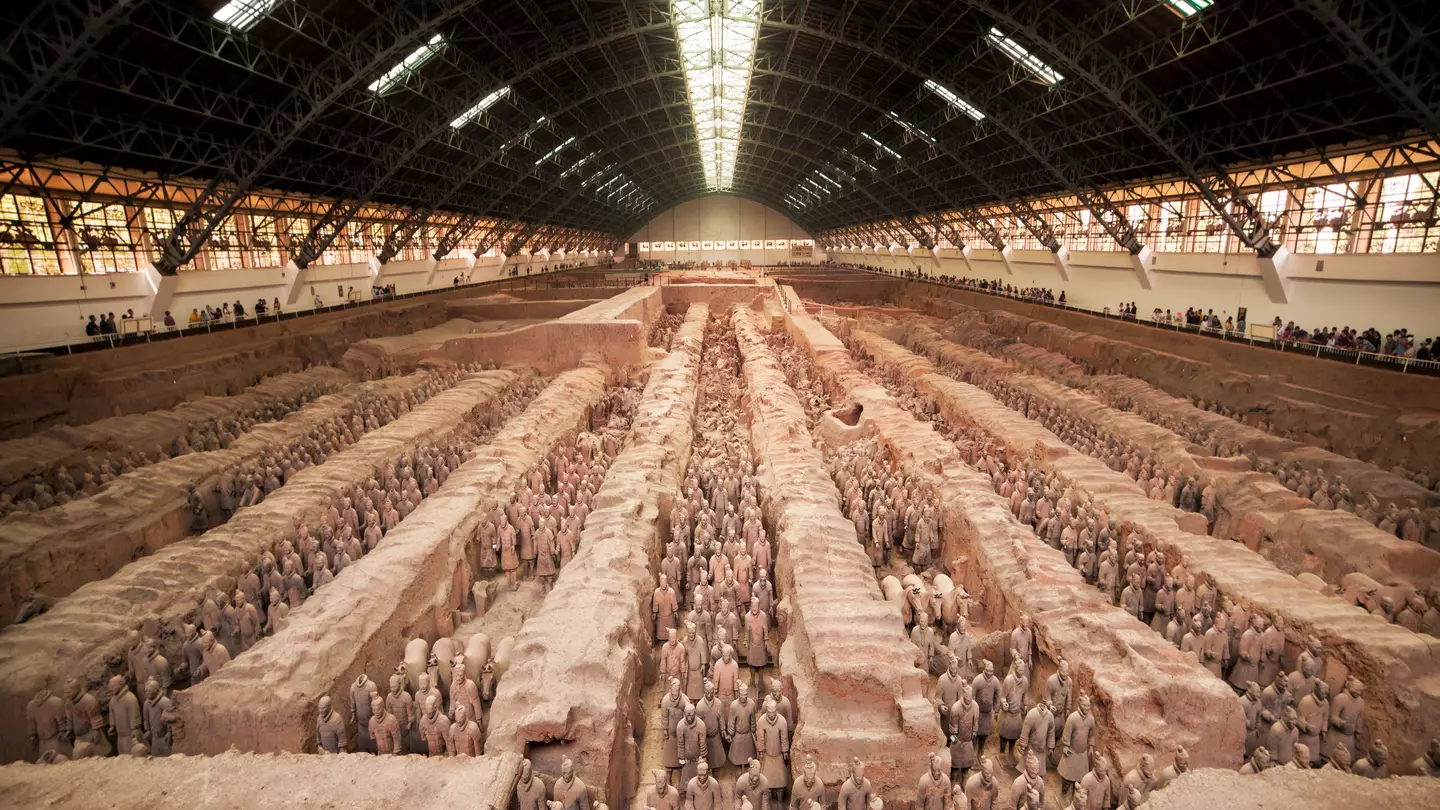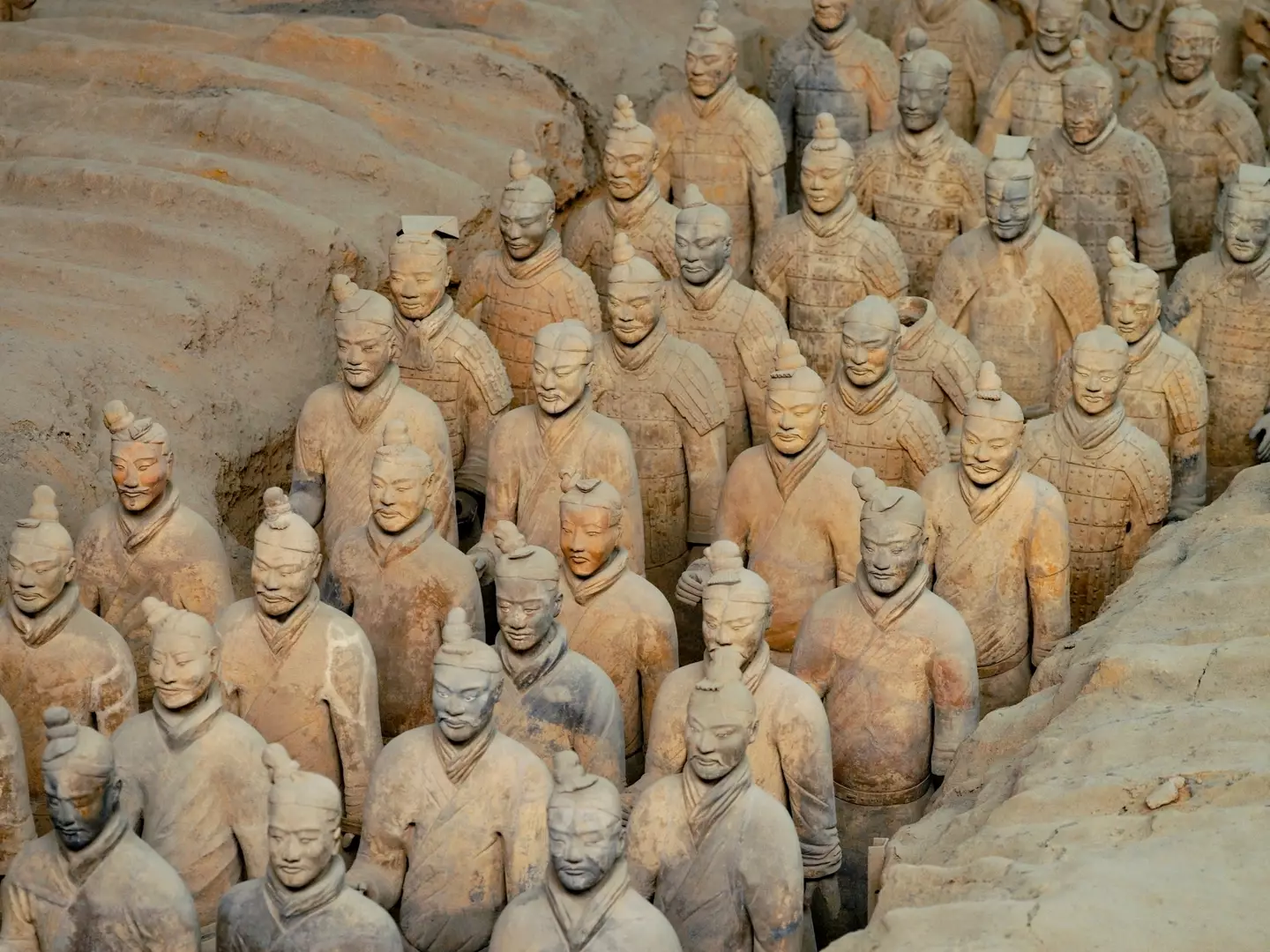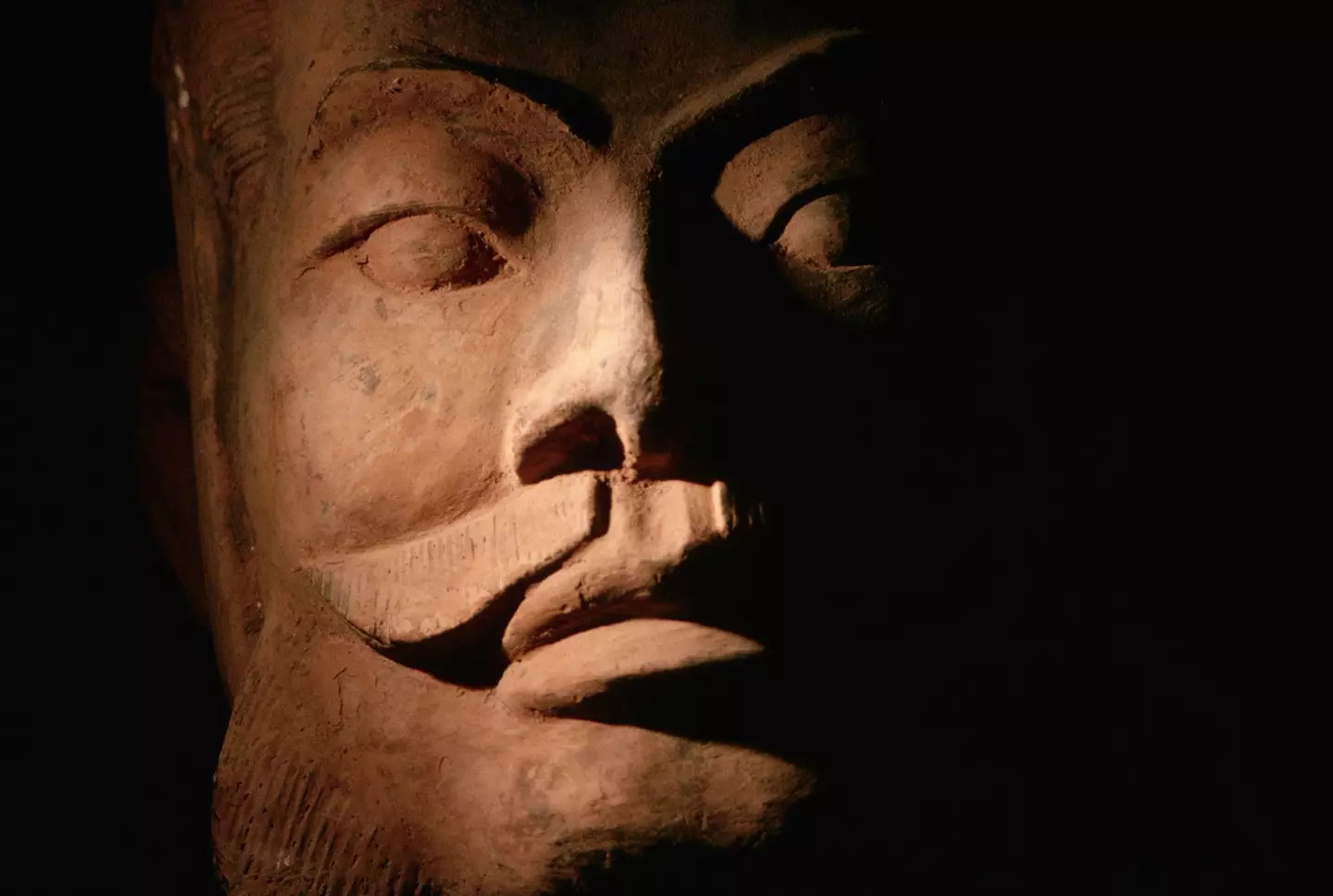
There’s a number of terrifying reasons why scientist are too scared to open up a particular tomb.
China’s first emperor, Qin Shi Huang, is buried in the Shaanxi Province. You might not know his name, but there’s a particular thing about all of this that you’ll probably, if not definitely know - The Terracotta Army.
Yeah, that famous sculpture of statues. Huang’s burial site and its Terracotta Army was completed after he ascended the throne back in 208 BCE and created a unified China.
However, it was later lost to history until it was found in 1974 by local farmers.
Advert
A huge name in the country's history, Huang was the man responsible for creating the Great Wall of China, implementing a standardised writing system and creating roads across the vast country to improve transportation.
But it’s his mausoleum and Terracotta Army that remain his most mysterious creations.

According to the National Museums Liverpool, there’s an estimated 6,000 statues still underground in one of the three burial pits.
Following the 1974 discovery, archaeologists began to excavate the site and were amazed by their findings.
Advert
In three separate pits stood an estimated 8,000 soldiers, 130 chariots with 520 horses, and 150 cavalry horses, believed to be modelled off of the emperor's real-life army of the time.
Various non-combat figures have also been uncovered at the sight, including artists, acrobats and musicians. The statues would also have been painted with bright colours at the time, although most of this has since been lost to the elements.
Why was the Terracotta Army and mausoleum constructed?
While the tomb of Qin Shi Huang and its surrounding army might seem a little over the top for modern times, the simple answer is well, why not?
As the first emperor of China, Qin Shi Huang would have wanted his legacy to be remembered long after his demise, hence the reason for building such as a grandiose final resting place. It's also believed the Terracotta Army was built with the purpose of protecting him in the afterlife.
Advert
After all, you don't conquer six warring states without making at least one enemy.

Why is the mausoleum of Qin Shi Huang unopened?
Considering the splendour of the Terracotta Army, you'd think that archaeologists would be racing to break open the tomb and discover what further wonders are inside - which makes their hesitance to enter all the more interesting.
This is partially down to practical reasons, with archaeologists not wanting to cause any damage to the structure as a whole.
Advert
There is also the fact that the tomb is said to contain various booby-traps laid throughout for protection, with no one wanting to find themselves on the receiving end of a 2,234-year-old trap.
According to a 2020 study, the tomb also contains high levels of mercury due to the emperor's supposed obsession with the substance, which he believed would grant him eternal life. Thus, anyone entering the tomb is also at risk of possible health complications.
So until a more delicate and advanced method of excavating the tomb can be found, the tomb of Qin Shi Huang will remain one of history's greatest mysteries.
Topics: China, Archaeology, History